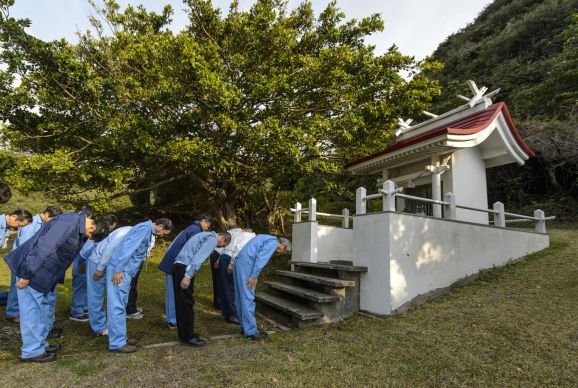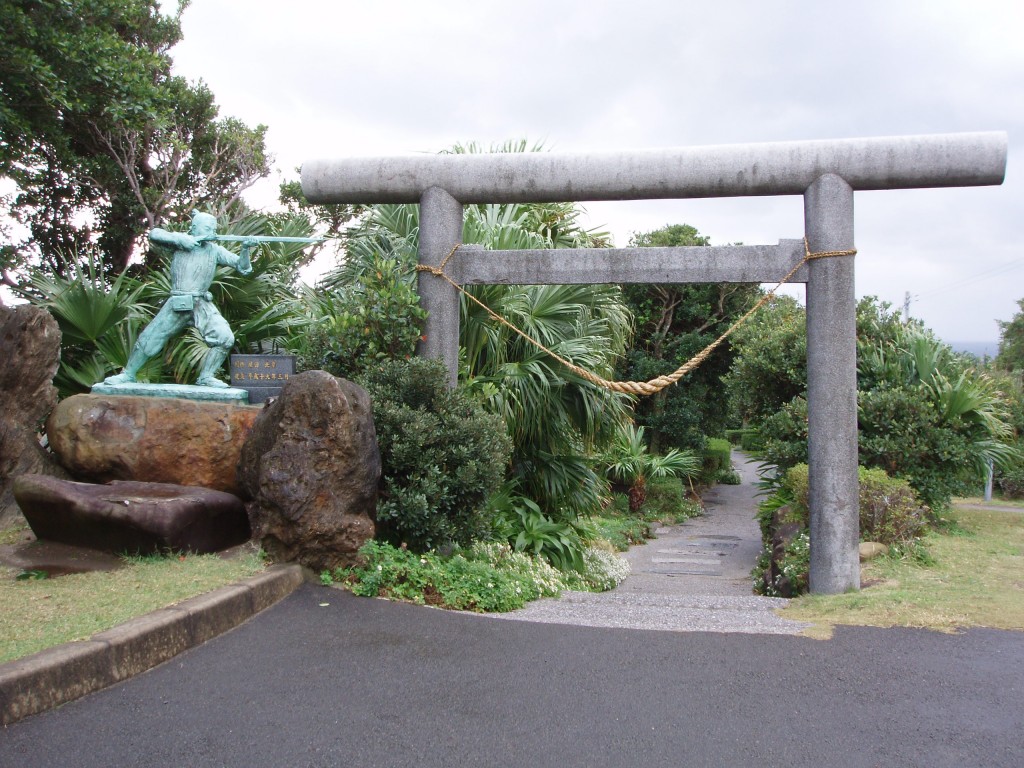Picture for the day on the Japan Today site shows how Shinto, despite its cherishing of traditions, manages to keep abreast of contemporary developments, including rocket science. Here blessings for a successful launch are requested of the local kami by technicians at the Tanegashima space centre – a safety precaution to the guardians of the other world, you might say. (Aptly enough, ten in Japanese can translate as both sky and heaven.)

REUTERS/NASA/Bill Ingalls (Japan Today Feb 26, 2014)
Japan Aerospace Exploration Agency (JAXA) team members bow at Ebisu Shrine, the first shrine in a traditional San-ja Mairi, or Three Shrine Pilgrimage. The team was praying for a successful launch of a Japanese H-IIA rocket carrying the NASA-JAXA, Global Precipitation Measurement (GPM) Core Observatory on Tanegashima Island on Friday.
****************************************************
Tanegashima island lies south of Kyushu, next to the World Heritage site of Yakushima, and it was the first place that Europeans ever landed in Japan, with the arrival of a couple of Portuguese merchants (possibly three) in 1543. I visited the bay where they landed as part of my research for In Search of Japan’s Hidden Christians, and found it marked by a model of the Chinese junk carrying the Portuguese, which was blown off-course from its route along the Chinese coast and shipwrecked on the Tanegashima coast. The Portuguese brought muskets with them, which soon spread across Japan thanks to the expertise in iron-smelting, and next to the bay is a shrine which as you can see in the photo below commemorates the event in the statuary at its entrance.

Shrine at Cape Kadoma next to the bay where the Portuguese merchants landed, bringing muskets to Japan. The country's main space centre is located nearby.

Leave a Reply